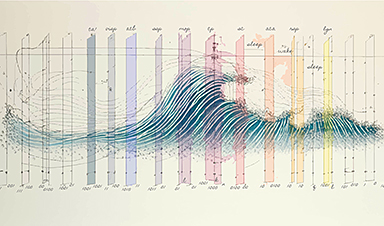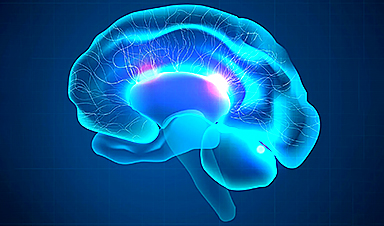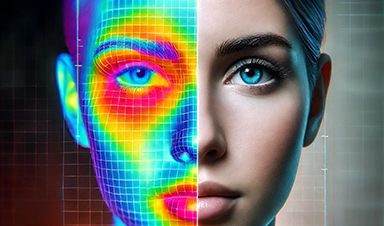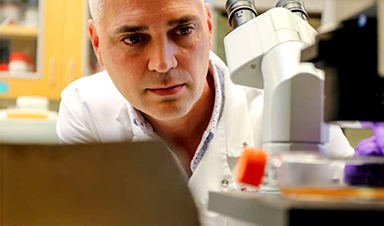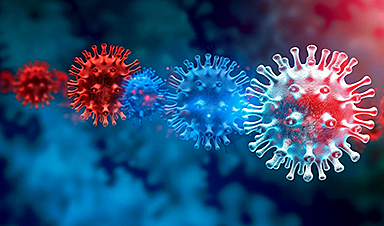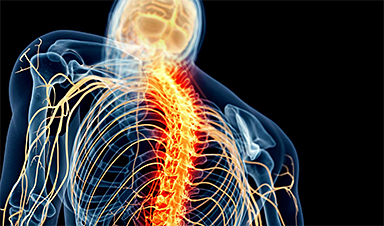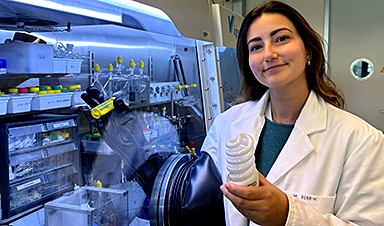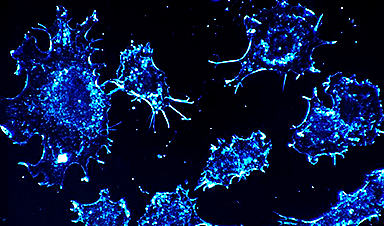A groundbreaking machine-learning study has unmasked the best drug combinations to prevent COVID-19 from coming back after an initial infection. It turns out these combos are not the same for every patient.
That the data came from China is significant for two reasons. First, when patients are treated for COVID-19 in the U.S, it is normally with one or two drugs. Early in the pandemic, doctors in China could prescribe as many as eight different drugs, enabling analysis of more drug combinations. Second, COVID-19 patients in China must quarantine in a government-run hotel after being discharged from the hospital, which allows researchers to learn about reinfection rates in a more systematic way.
“That makes this study unique and interesting. You can’t get this kind of data anywhere else in the world,” said Xinping Cui, UCR statistics professor and study author.
The study project began in April 2020, about a month into the pandemic. At the time, most studies were focused on death rates. However, doctors in Shenzhen, near Hong Kong, were more concerned about recurrence rates because fewer people there were dying.
“Surprisingly, nearly 30% of patients became positive again within 28 days of being released from the hospital,” said Jiayu Liao, associate professor of bioengineering and study co-author.
Data for more than 400 COVID patients was included in the study. Their average age was 45, most were infected with moderate cases of the virus, and the group was evenly divided by gender. Most were treated with one of various combinations of an antiviral, an anti-inflammatory, and an immune-modulating drug, such as interferon or hydroxychloroquine.
That various demographic groups had better success with different combinations can be traced to the way the virus operates.
“COVID-19 suppresses interferon, a protein cells make to inhibit invading viruses. With defenses lowered, COVID can replicate until the immune system explodes in the body, and destroys tissues,” explained Liao.
“When we get treatment for diseases, many doctors tend to offer one solution for people 18 and up. We should now reconsider age differences, as well as other disease conditions, such as diabetes and obesity,” Liao said.
Most of the time, when conducting drug efficacy tests, scientists design a clinical trial in which people having the same disease and baseline characteristics are randomly assigned to either treatment or control groups. But that approach does not consider other medical conditions that may affect how the drug works—or doesn’t work—for specific sub-groups.
Because this study utilized real-world data, the researchers had to adjust for factors that could affect the outcomes they observed. For example, if a certain drug combination was given mostly to older people and proved ineffective, it would not be clear whether the drug is to blame or the person’s age.
“For this study, we pioneered a technique to attack the challenge of confounding factors by virtually matching people with similar characteristics who were undergoing different treatment combinations,” Cui said. “In this way, we could generalize the efficacy of treatment combinations in different subgroups.”
While COVID-19 is better understood today, and vaccines have greatly reduced death rates, there remains much to be learned about treatments and preventing reinfections. “Now that recurrence is more of a concern, I hope people can use these results,” Cui said.
Machine learning has been used in many areas related to COVID, such as disease diagnosis, vaccine development and drug design, in addition to this new analysis of multi-drug combinations. Liao believes the technology will have an even bigger role to play going forward.
“In medicine, machine learning and artificial intelligence have not yet had as much impact as I believe they will in the future,” Liao said. “This project is a great example of how we can move toward truly personalized medicine.”
News
The Silent Battle Within: How Your Organs Choose Between Mom and Dad’s Genes
Research reveals that selective expression of maternal or paternal X chromosomes varies by organ, driven by cellular competition. A new study published today (July 26) in Nature Genetics by the Lymphoid Development Group at the MRC [...]
Study identifies genes increasing risk of severe COVID-19
Whether or not a person becomes seriously ill with COVID-19 depends, among other things, on genetic factors. With this in mind, researchers from the University Hospital Bonn (UKB) and the University of Bonn, in [...]
Small regions of the brain can take micro-naps while the rest of the brain is awake and vice versa
Sleep and wake: They're totally distinct states of being that define the boundaries of our daily lives. For years, scientists have measured the difference between these instinctual brain processes by observing brain waves, with [...]
Redefining Consciousness: Small Regions of the Brain Can Take Micro-Naps While the Rest of the Brain Is Awake
The study broadly reveals how fast brain waves, previously overlooked, establish fundamental patterns of sleep and wakefulness. Scientists have developed a new method to analyze sleep and wake states by detecting ultra-fast neuronal activity [...]
AI Reveals Health Secrets Through Facial Temperature Mapping
Researchers have found that different facial temperatures correlate with chronic illnesses like diabetes and high blood pressure, and these can be detected using AI with thermal cameras. They highlight the potential of this technology [...]
Breakthrough in aging research: Blocking IL-11 extends lifespan and improves health in mice
In a recent study published in the journal Nature, a team of researchers used murine models and various pharmacological and genetic approaches to examine whether pro-inflammatory signaling involving interleukin (IL)-11, which activates signaling molecules such [...]
Promise for a universal influenza vaccine: Scientists validate theory using 1918 flu virus
New research led by Oregon Health & Science University reveals a promising approach to developing a universal influenza vaccine—a so-called "one and done" vaccine that confers lifetime immunity against an evolving virus. The study, [...]
New Projects Aim To Pioneer the Future of Neuroscience
One study will investigate the alterations in brain activity at the cellular level caused by psilocybin, the psychoactive substance found in “magic mushrooms.” How do neurons respond to the effects of magic mushrooms? What [...]
Decoding the Decline: Scientific Insights Into Long COVID’s Retreat
Research indicates a significant reduction in long COVID risk, largely due to vaccination and the virus’s evolution. The study analyzes data from over 441,000 veterans, showing lower rates of long COVID among vaccinated individuals compared [...]
Silicon Transformed: A Breakthrough in Laser Nanofabrication
A new method enables precise nanofabrication inside silicon using spatial light modulation and laser pulses, creating advanced nanostructures for potential use in electronics and photonics. Silicon, the cornerstone of modern electronics, photovoltaics, and photonics, [...]
Caught in the actinium: New research could help design better cancer treatments
The element actinium was first discovered at the turn of the 20th century, but even now, nearly 125 years later, researchers still don't have a good grasp on the metal's chemistry. That's because actinium [...]
Innovative Light-Controlled Drugs Could Revolutionize Neuropathic Pain Treatment
A team of researchers from the Institute for Bioengineering of Catalonia (IBEC) has developed light-activated derivatives of the anti-epileptic drug carbamazepine to treat neuropathic pain. Light can be harnessed to target drugs to specific [...]
Green Gold: Turning E-Waste Into a Treasure Trove of Rare Earth Metals
Scientists are developing a process inspired by nature that efficiently recovers europium from old fluorescent lamps. The approach could lead to the long-awaited recycling of rare earth metals. A small molecule that naturally serves [...]
Cambridge Study: AI Chatbots Have an “Empathy Gap,” and It Could Be Dangerous
A new study suggests a framework for “Child Safe AI” in response to recent incidents showing that many children perceive chatbots as quasi-human and reliable. A study has indicated that AI chatbots often exhibit [...]
Nanoparticle-based delivery system could offer treatment for diabetics with rare insulin allergy
Up to 3% of people with diabetes have an allergic reaction to insulin. A team at Forschungszentrum Jülich has now studied a method that could be used to deliver the active substance into the [...]
Nanorobot kills cancer cells in mice with hidden weapon
Researchers at Karolinska Institutet in Sweden have developed nanorobots that kill cancer cells in mice. The robot's weapon is hidden in a nanostructure and is exposed only in the tumor microenvironment, sparing healthy cells. [...]



